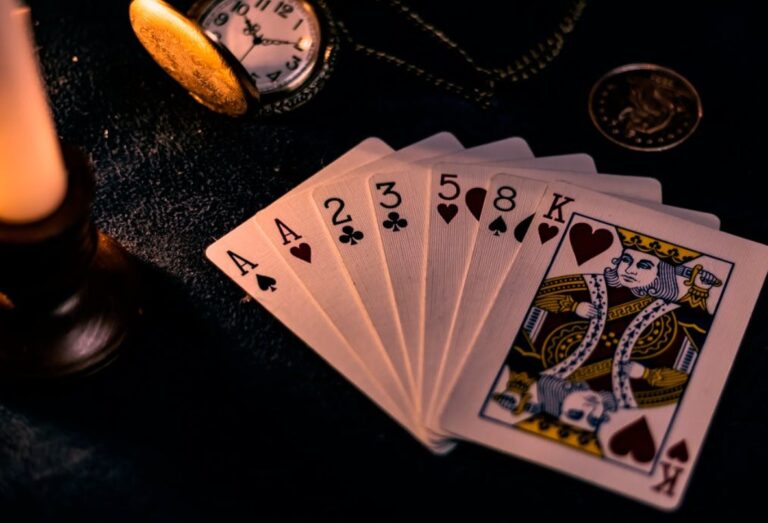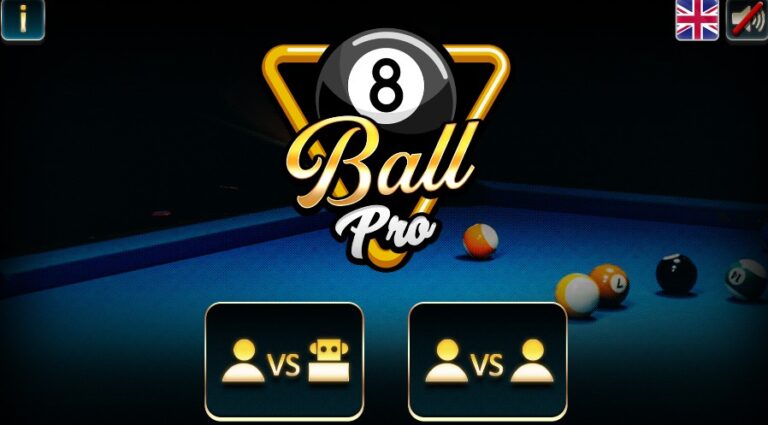Bananagrams is a fast-paced, tile-based word game that challenges players to build interconnected grids of real words as quickly as possible. With its simple setup and minimal rules, it’s an engaging activity for players of all ages.
This guide explores everything from the setup and rules to gameplay strategies and variations, helping beginners and seasoned word-lovers alike.
What Is Bananagrams?

Bananagrams is a fast-paced, anagram-style word game that uses letter tiles instead of a game board. Each player works independently to build a crossword-style grid using their own set of tiles.
Unlike Scrabble, there is no point system or turns involved. Instead, players race to be the first to use all their letters and call out “Bananas!” to win the game.
The game encourages quick thinking and vocabulary recall, making it an engaging and educational experience. While games like Scrabble rely on tile placement and scoring strategies, Bananagrams is more focused on speed, adaptability, and word-building under pressure.
Another major difference is its portability. Bananagrams comes in a compact, banana-shaped pouch and requires no board or additional tools, making it ideal for travel or casual play.
How Do You Set Up A Game Of Bananagrams?
Setting up Bananagrams is simple and takes only a minute. All players gather around a flat surface where the letter tiles can be easily accessed.
To set up:
- Place all 144 tiles face down in the centre of the playing area. This collection of tiles is known as the Bunch.
- Each player draws a number of starting tiles depending on the number of participants.
Here is a quick reference table:
| Number Of Players | Starting Tiles Per Player |
| 2 to 4 | 21 |
| 5 to 6 | 15 |
| 7 to 8 | 11 |
Once the tiles are distributed, players arrange them face down in front of them. No peeking is allowed before the game begins. A flat playing surface is essential so players can easily build their grids and draw tiles from the Bunch.
What Are The Official Rules Of Bananagrams?
The objective is to be the first to use all your letter tiles in a connected grid of valid words. The rules are straightforward but require quick action and attention to word construction.
- Any player can start the game by calling out “Split” which signals everyone to flip their tiles face up and start forming words.
- Words must be connected like a crossword, either horizontally or vertically, and read from left to right or top to bottom.
- Players may rearrange their grids as often as they like, even dismantling words to form new ones.
- Once a player uses all their tiles, they yell “Peel” and every player, including the one who called it, draws one new tile from the Bunch.
- Players may say “Dump” at any time to exchange one unwanted tile for three new ones. This move affects only the player who chooses to Dump.
- The game continues with Peeling and Dumping until the Bunch has fewer tiles than the number of players.
- The first player to use all their tiles after the Bunch is nearly empty must shout “Bananas.” At this point, their grid is checked by the other players.
Invalid words, misspellings, or the use of proper nouns can result in the player being disqualified from that round. If disqualified, the player’s tiles are returned to the Bunch and the game continues until a valid winner emerges.
How Can You Play Bananagrams Solo Or With Different Player Counts?

Bananagrams is versatile and can be enjoyed by individuals or groups. The number of players affects the pace and intensity of the game.
Solo Play (Banana Solitaire)
- Draw 21 tiles and aim to complete your grid in the shortest time possible.
- Rearranging and dumping are allowed just like in multiplayer mode.
- Great for improving vocabulary and building speed.
With Two Or More Players
- Use the standard setup and tile distribution.
- Each player builds their own grid independently while keeping an eye on competitors who might be nearing completion.
- Use of Peel and Dump remains the same.
Team Mode
- Players can team up in pairs, especially useful for family game nights or classroom settings.
- Teammates can collaborate on building one grid, sharing ideas and rearranging tiles together.
- Encourages cooperation and discussion about word strategy.
Here is a quick comparison of game dynamics based on player count:
| Player Count | Gameplay Notes |
| 1 (Solo) | Time-based challenge |
| 2-4 | Balanced play with moderate pace |
| 5-6 | Fast-paced and competitive |
| 7-8 | Rapid and often chaotic, ideal for parties |
What Are The Most Popular Bananagrams Game Variations?
Bananagrams is not only a flexible word game but also a highly adaptable one. Its basic mechanics are simple enough that players can easily create or enjoy multiple game variations, each offering a unique twist on the original.
These variations make the game suitable for different moods, skill levels, and playing environments. Whether players are looking for a relaxed pace, a solitary challenge, or a group competition, there is a version to match the occasion.
Banana Smoothie
This version is perfect for players who prefer a calmer, non-competitive experience. Banana Smoothie removes some of the time pressure and focuses on thoughtful word formation rather than speed.
How it works:
- All 144 tiles are placed face down in the centre.
- The tiles are then divided equally among players, still face down.
- There are no “Peel” or “Dump” calls in this version.
- Each player turns their tiles face up and works on creating their own complete word grid.
- The first to complete their grid and shout “Bananas” wins the game.
Unique aspects:
- Since there is no Peeling, all players work with a fixed set of tiles from the start.
- Because players do not interact through Peeling or Dumping, this mode is quieter and ideal for playing in a relaxed setting.
- In the event of a tie, the player with the longest valid word If the tie persists, an additional hand is played to determine the winner.
This variation is well-suited for younger children, older players, or anyone new to the game who prefers a slower pace.
Banana Café
Banana Café is designed with convenience in mind, particularly when playing in public spaces like cafés or while waiting for food in restaurants. It’s a simplified version that maintains the spirit of the original game while limiting the need for large surface areas or frequent tile-drawing.
How it works:
- All the tiles remain inside the banana pouch throughout the game.
- Each player draws 21 tiles directly from the pouch and places them face down in front of them.
- The game starts when a player announces “Split”, and all players begin forming their grids.
- “Dump” is allowed, enabling players to swap one tile for three new ones from the pouch.
- “Peel” is not used in this variation.
Unique aspects:
- Because the tiles stay in the pouch, the setup is quicker and cleaner.
- The absence of Peeling reduces interruptions and makes the game flow more smoothly in informal settings.
- It maintains the original challenge of forming interconnected words but without the frenzy of constant tile drawing.
Banana Café is ideal for travel, public play, or anytime you need a more contained version of the game.
Best Of Series
Sometimes one round of Bananagrams just isn’t enough. The Best Of Series adds a competitive edge by turning the game into a tournament-style format. This variation is perfect for players who want to extend gameplay and track performance across multiple hands.
How it works:
- Play three or five rounds of standard Bananagrams, using all original rules.
- Keep a tally of which player wins each round.
- At the end of the series, the player who has won the most rounds is crowned the Top Banana.
Unique aspects:
- Encourages consistency and strategy across multiple games.
- Allows for redemption in later rounds if a player performs poorly in an early hand.
- Can be paired with rewards or friendly penalties to make it more engaging.
This version is often used in classrooms, family gatherings, or board game nights to extend the fun and reward cumulative performance.
Banana Solitaire
Designed for solo players, Banana Solitaire is a self-paced challenge that helps players sharpen their vocabulary and improve their game strategy.
How it works:
- The player draws 21 tiles from the Bunch and turns them face up.
- They attempt to create a complete, valid grid using all the tiles.
- The objective is to build the grid as quickly as possible, racing against the clock or a personal best time.
Alternative goal:
- Instead of speed, players can challenge themselves to use the fewest words
- This encourages creating longer, more complex words rather than many short ones.
Unique aspects:
- Excellent for learning and practice, especially for younger players or language learners.
- Great for improving speed and efficiency for future multiplayer games.
- Offers a relaxing way to engage with the game when no other players are available.
How Do You Improve Your Chances Of Winning Bananagrams?

Winning at Bananagrams isn’t just about having a big vocabulary; it’s a combination of speed, strategy, adaptability, and mental flexibility.
Unlike other word games that rely on scoring or letter value, Bananagrams rewards players who can rapidly construct, dismantle, and rearrange their words under pressure.
Whether you’re new to the game or looking to refine your technique, the following tips and approaches can dramatically improve your performance and increase your chances of becoming the Top Banana.
1. Start With Short, High-Frequency Words
When the game begins, the best strategy is to quickly lay down short, common words that use high-frequency letters. This allows you to establish a foundation and gives you more flexibility to build off your initial grid.
Tips:
- Use three- and four-letter words like “cat,” “tree,” “nest,” or “game.”
- Focus on using easily extendable base words like “run” which can become “running” or “runner.”
- Avoid wasting time on long or obscure words at the start.
Getting your first layout complete quickly helps you reach the “Peel” stage faster and stay ahead of other players.
2. Rearrange And Adapt Frequently
One of the keys to winning Bananagrams is the ability to restructure your grid on the fly. Unlike Scrabble, your layout is never permanent, and you’re encouraged to change your words as better opportunities arise.
Why it works:
- Rearranging helps you integrate new tiles more efficiently.
- It prevents dead ends and helps clear difficult letters.
- It opens space for longer and higher-utility words.
Players who get stuck trying to force new letters into an inflexible grid often fall behind. Always be willing to tear down and rebuild your layout to maintain momentum.
3. Learn Common Prefixes, Suffixes, And Word Roots
Familiarity with word construction can significantly speed up gameplay. Many words can be formed or extended using standard prefixes and suffixes.
Useful patterns to memorise:
| Prefix/Suffix | Example Base Word | Modified Word |
| un- | real | unreal |
| re- | play | replay |
| -ing | build | building |
| -ed | bake | baked |
| -ly | quick | quickly |
Recognising and applying these patterns allows you to expand existing words instead of starting from scratch. This saves both time and effort during critical moments.
4. Master The Art Of Dumping Strategically
Knowing when to “Dump” a tile is a powerful tactic. Some letters, like Q, X, or Z, are notoriously difficult to use, especially under time pressure. Don’t waste valuable seconds trying to find a fit if you’re drawing a blank.
Dump tips:
- If a tile hasn’t found a place in 10–15 seconds, consider dumping it.
- Dumping early in the game is safer because you’ll have more time to manage the extra tiles.
- Avoid overusing Dumping, as taking on three new tiles for one can quickly become overwhelming.
Used wisely, dumping can help you get unstuck and find a better rhythm.
5. Keep Tiles Organised And Visible
Having a tidy workspace can give you a surprising edge. Scattered or overlapping tiles slow down your ability to read, plan, and act. Treat your playing space like a toolbox, organised and efficient.
Best practices:
- Group vowels and consonants separately before starting.
- Lay tiles out in a grid or linear arrangement to make scanning faster.
- Avoid stacking tiles or placing them too close to each other.
Efficiency in layout management translates to quicker decision-making and better gameplay flow.
6. Focus On Flexibility Over Perfection
One common mistake new players make is obsessing over finding the “perfect” word or creating overly complex grids. In Bananagrams, speed trumps sophistication. Your goal is not to create the most clever layout, it’s to be the fastest to complete a valid one.
Key mindset shifts:
- Don’t waste time perfecting an arrangement that already works.
- Be willing to change your approach mid-game if something isn’t working.
- Focus on steady progress rather than perfection.
Getting comfortable with compromise and improvisation is essential for staying competitive.
7. Practice With Timed Solo Rounds
If you’re serious about improving, solo practice sessions are incredibly effective. Playing alone allows you to refine your reflexes, spot common mistakes, and discover your most efficient strategies.
How to do it:
- Set a timer for 5 or 10 minutes.
- Draw 21 tiles and aim to complete a full grid within the time limit.
- Note which letters or combinations slow you down and focus on those in future rounds.
Over time, you’ll build speed, confidence, and a more intuitive sense of word formation.
What Are The Educational Benefits Of Playing Bananagrams?
Bananagrams is not just fun; it is also highly educational, which is why it’s frequently used in classrooms and learning environments.
Some key educational advantages include:
- Enhances vocabulary by encouraging word recall and exposure to new terms.
- Improves spelling through active construction and validation of words.
- Strengthens pattern recognition by pushing players to recognise letter combinations and common English structures.
- Builds cognitive flexibility as players must frequently adapt and modify their strategies mid-game.
- Suitable for ESL learners because of its focus on language fundamentals in an enjoyable format.
Teachers often incorporate Bananagrams into literacy sessions and language workshops, using it to reinforce spelling, phonics, and reading skills.
What Materials And Versions Of Bananagrams Are Available?
Bananagrams comes in multiple editions and formats to cater to different player needs and preferences.
Here are some popular versions:
- Classic Bananagrams: The original version with 144 tiles in a yellow pouch.
- My First Bananagrams: Designed for younger children with simplified gameplay and tiles featuring guide markings.
- Big Letter Bananagrams: Larger tiles for visually impaired players or early learners.
- Digital Versions: Available for mobile and desktop platforms, allowing for remote play.
These editions maintain the core mechanics while offering adjusted rules and features for accessibility and age-appropriateness.
How Do You Clean Up And Store Bananagrams After Playing?

Tidying up Bananagrams is as simple as playing it. The tiles are durable and easy to store.
- Collect all tiles and return them face down to the pouch.
- Zip the pouch securely to prevent tiles from spilling.
- Store in a dry place to maintain the condition of the fabric pouch and tiles.
- If tiles become dusty or stained, wipe gently with a damp cloth.
- Avoid soaking tiles or exposing them to excessive heat.
Taking proper care of your game ensures its longevity and keeps gameplay smooth every time.
FAQs about Playing Bananagrams
What are acceptable words in Bananagrams?
Acceptable words include standard dictionary entries no proper nouns, abbreviations, or acronyms.
Can Bananagrams be played in other languages?
Yes, versions in languages like Spanish and French are available, or you can adapt the English version using non-English dictionaries.
Is there a scoring system in Bananagrams?
No formal scoring system exists, but players can track wins over multiple rounds using the “Best of” variation.
Can young children play Bananagrams?
Yes. My First Bananagrams is specifically designed for younger players with simpler rules and visual aids.
What happens if the Bunch runs out of tiles?
Once the Bunch has fewer tiles than players, the next “Bananas!” call triggers the final review to determine the winner.
Are abbreviations allowed in the game?
No, abbreviations, acronyms, and proper nouns are not permitted.
Is Bananagrams suitable for educational use?
Absolutely. It’s used widely in classrooms to reinforce spelling, vocabulary, and critical thinking.







